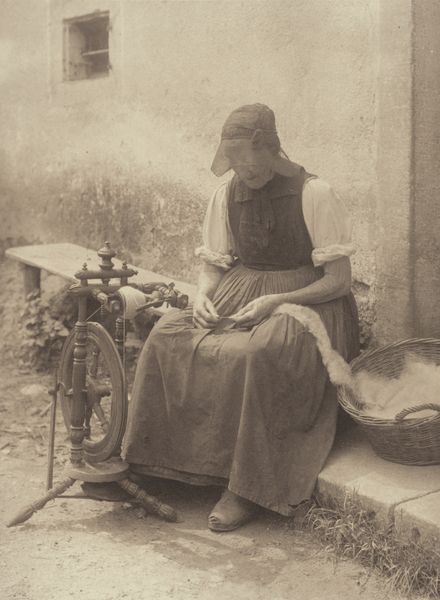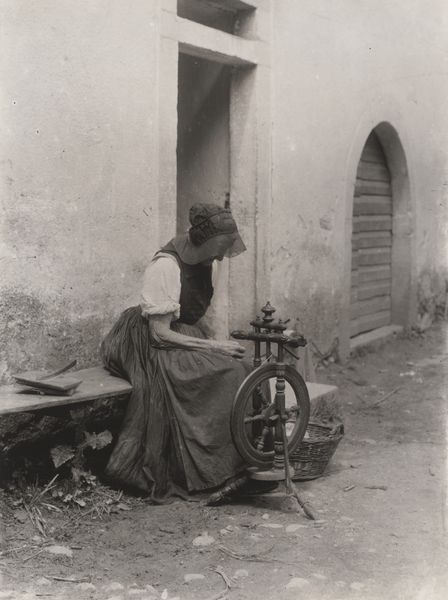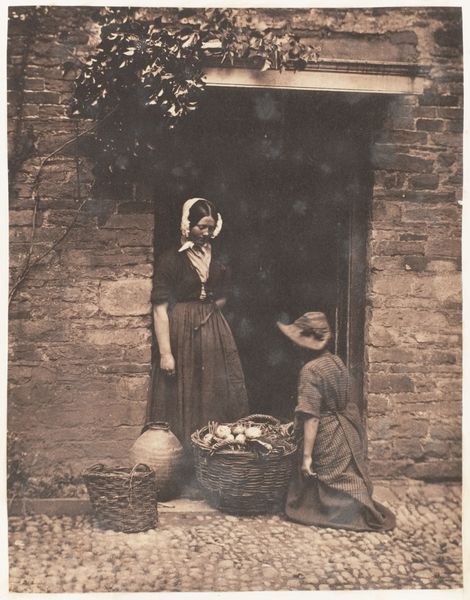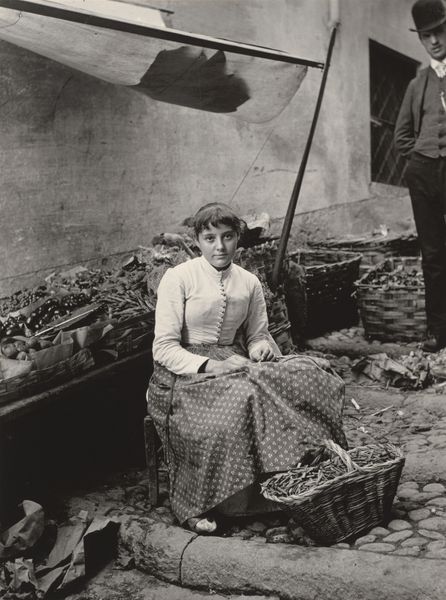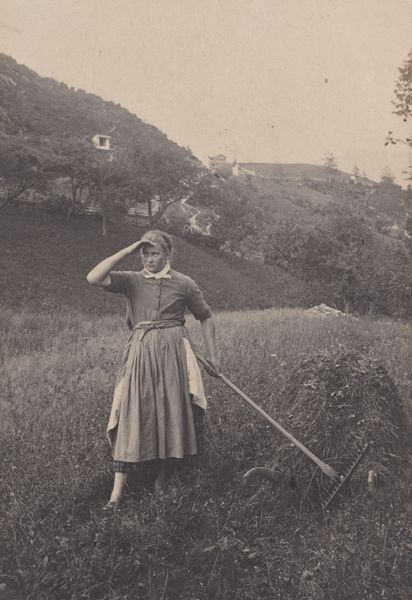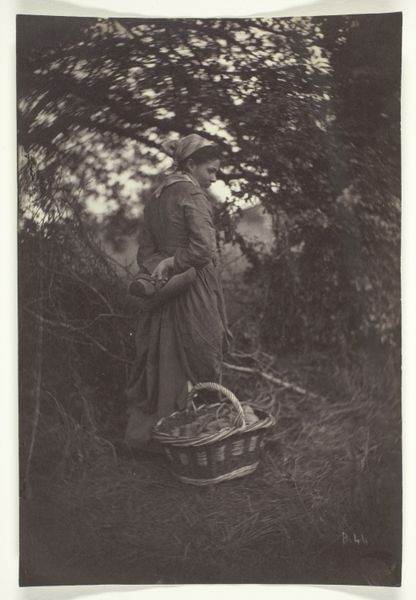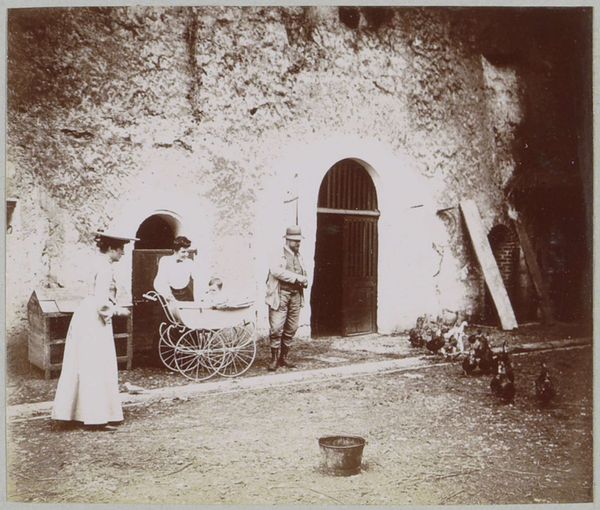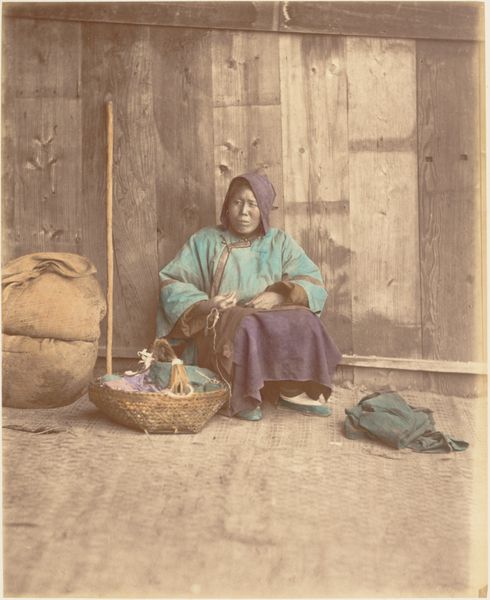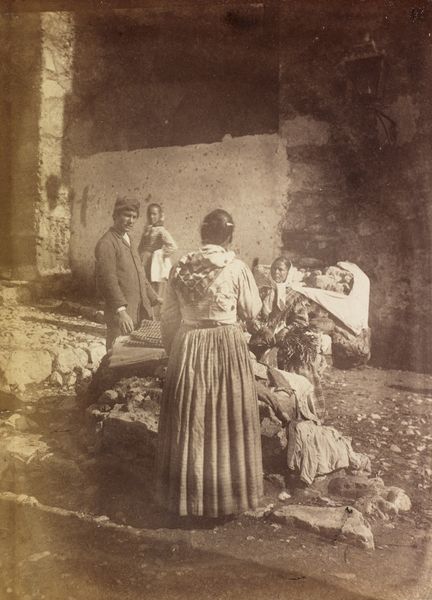
Dimensions: sheet (trimmed to image): 19.2 × 14.2 cm (7 9/16 × 5 9/16 in.) page size: 34.8 × 27 cm (13 11/16 × 10 5/8 in.)
Copyright: National Gallery of Art: CC0 1.0
Curator: Alfred Stieglitz’s gelatin-silver print, "A Study, Gutach," likely captured between 1894 and 1896, offers a glimpse into a rural past. The woman pictured is at work spinning—I wonder, what's your immediate reaction to it? Editor: I am struck by the sheer labor implied here, Curator. Look at the woman's posture, the worn spinning wheel, the basket brimming with raw wool – it speaks volumes about the manual effort central to life then. The silver gelatin gives this an almost textural element doesn't it? Curator: Precisely, and that's where it connects to broader socio-political issues, isn't it? A woman situated within what appears to be traditional attire doing a labor intensive task speaks volumes of the patriachal system. It situates this woman to a pre-industrial revolution mindset. Editor: Agreed, her labor literally produced material for clothing, trade, survival. Consider the spinning wheel, a beautiful, utilitarian object in itself, manufactured through someone else's labor probably. I also notice some other things within the context, for example there appears to be something leaning on the wall within the backdrop, or materials to be used to assist her at some point? Curator: Those elements work well together in an historical perspective. In my perspective, a photograph such as this is often viewed as art transcending documentation, but it also immortalizes a certain reality that would ultimately disappear with time, or change for women in general. Editor: That’s true, Alfred Stieglitz was immortalizing a dying method for producing fabrics, or perhaps ways for the people to clothe themselves back in this particular point in time. Perhaps it does not explicitly speak of a revolution in how to make clothes for ourselves. The texture is simply amazing here, almost rough to the touch from a viewing perspective. Curator: Stieglitz used this period to grapple with documenting a time capsule. Its photographic aesthetic allowed for it to blur boundaries between past and present, creating a certain dialogue. The dialogue would imply what these societal conditions look like, and ultimately, whether the image would change a viewers mind. Editor: In the end, whether the viewers' minds can be altered or influenced when taking on the material realities can give voice to not only this artist's intent, but even ways that photography or silver gelatin was used at that period in time to shift views. The means of making become just as vital to view.
Comments
No comments
Be the first to comment and join the conversation on the ultimate creative platform.
